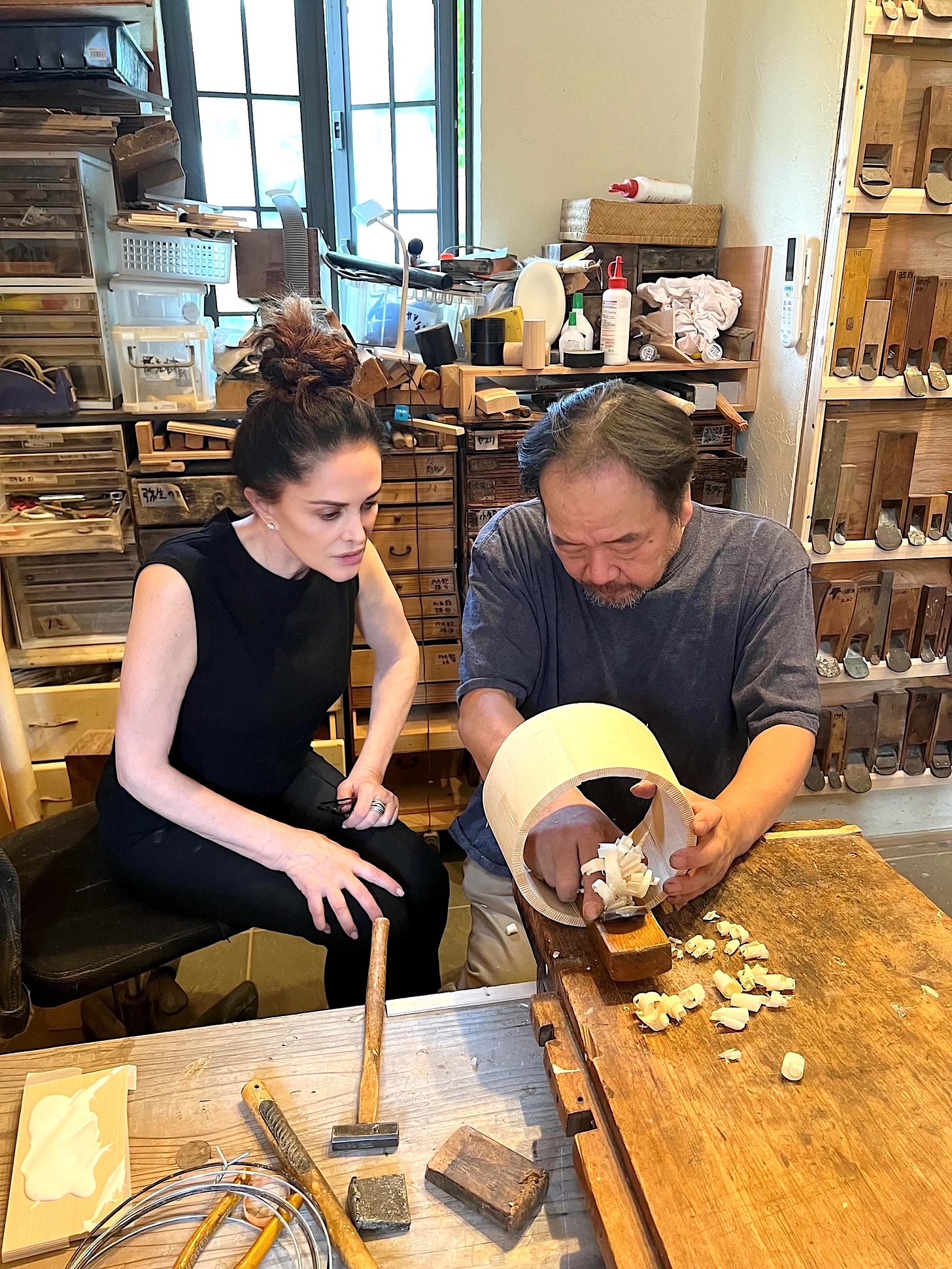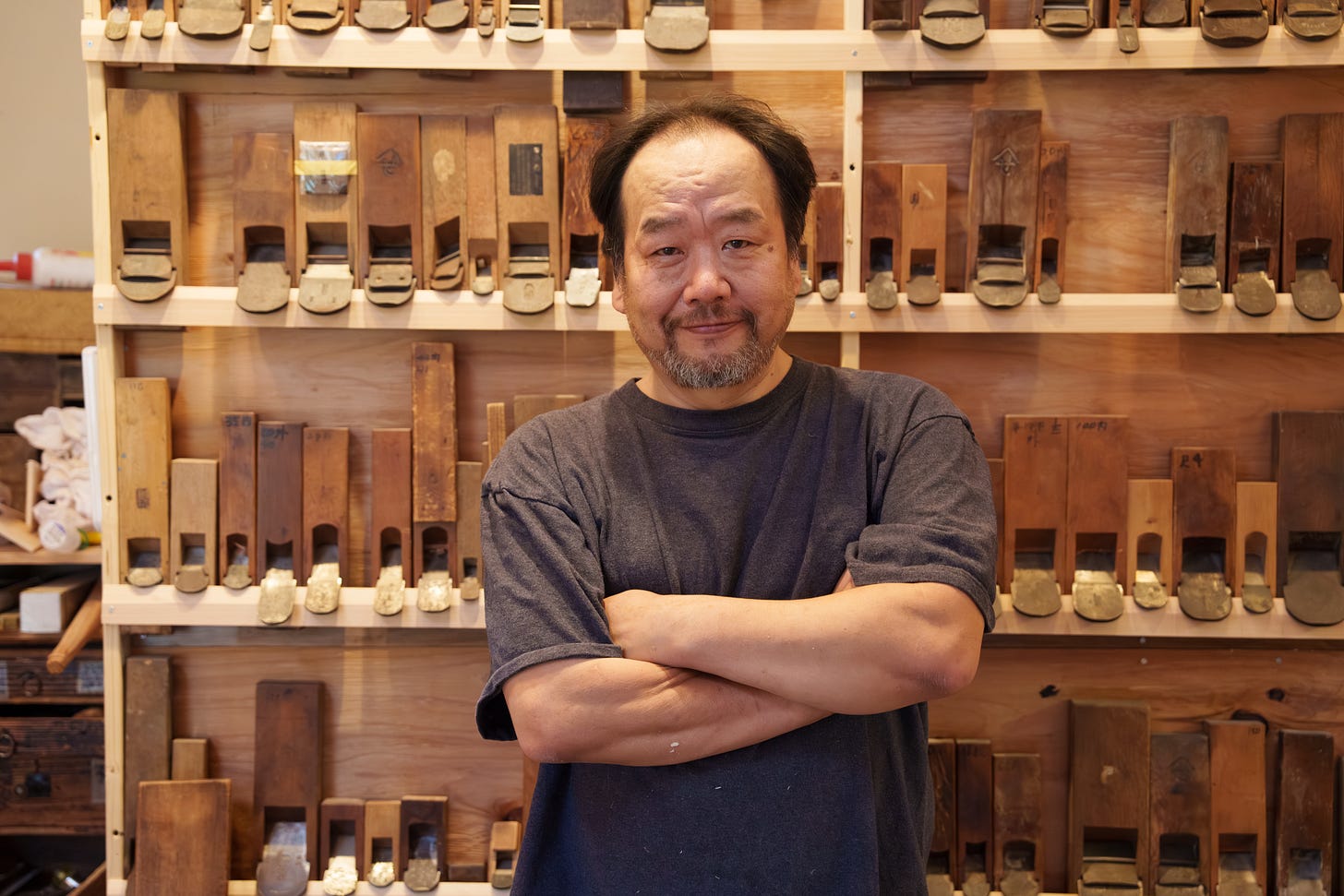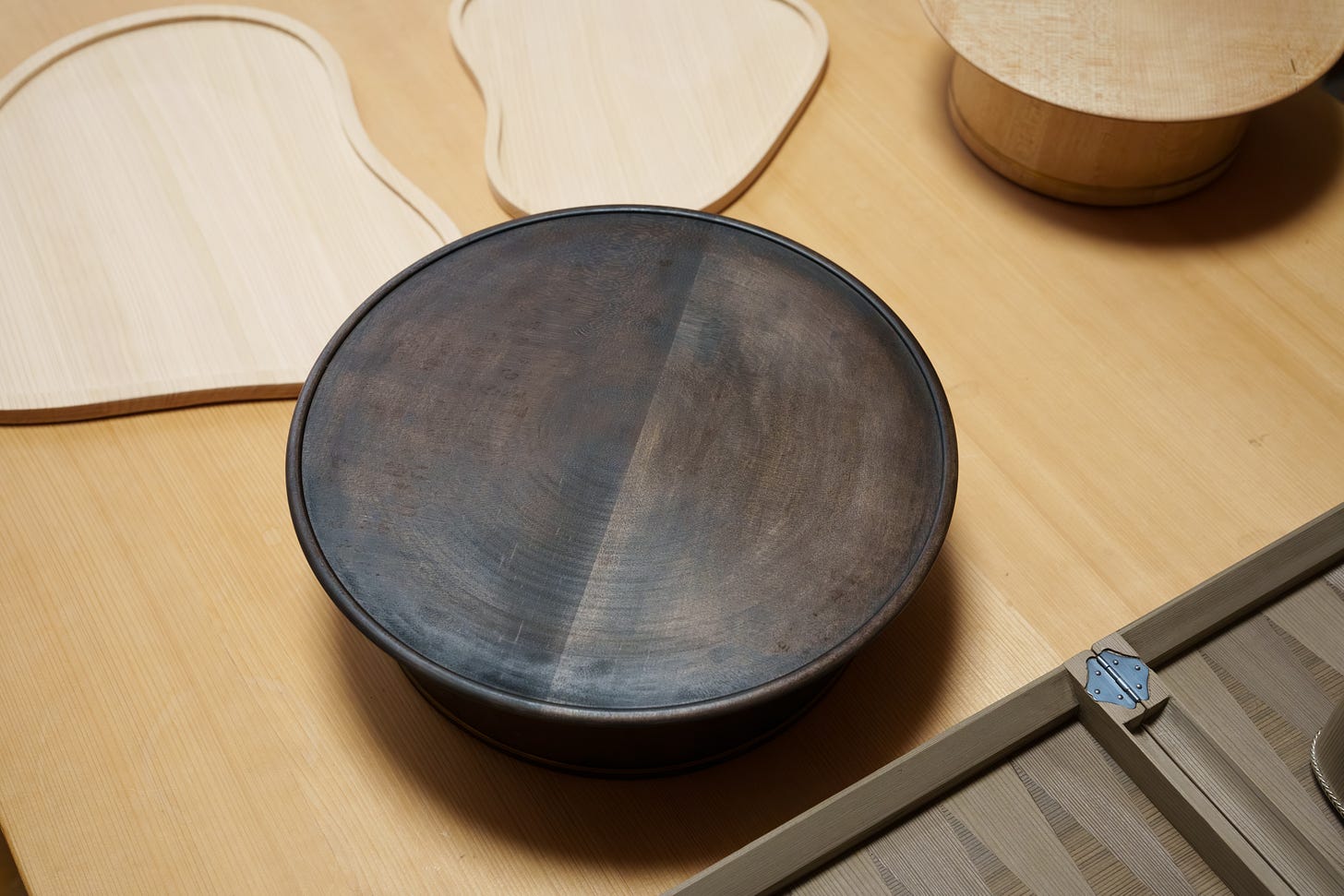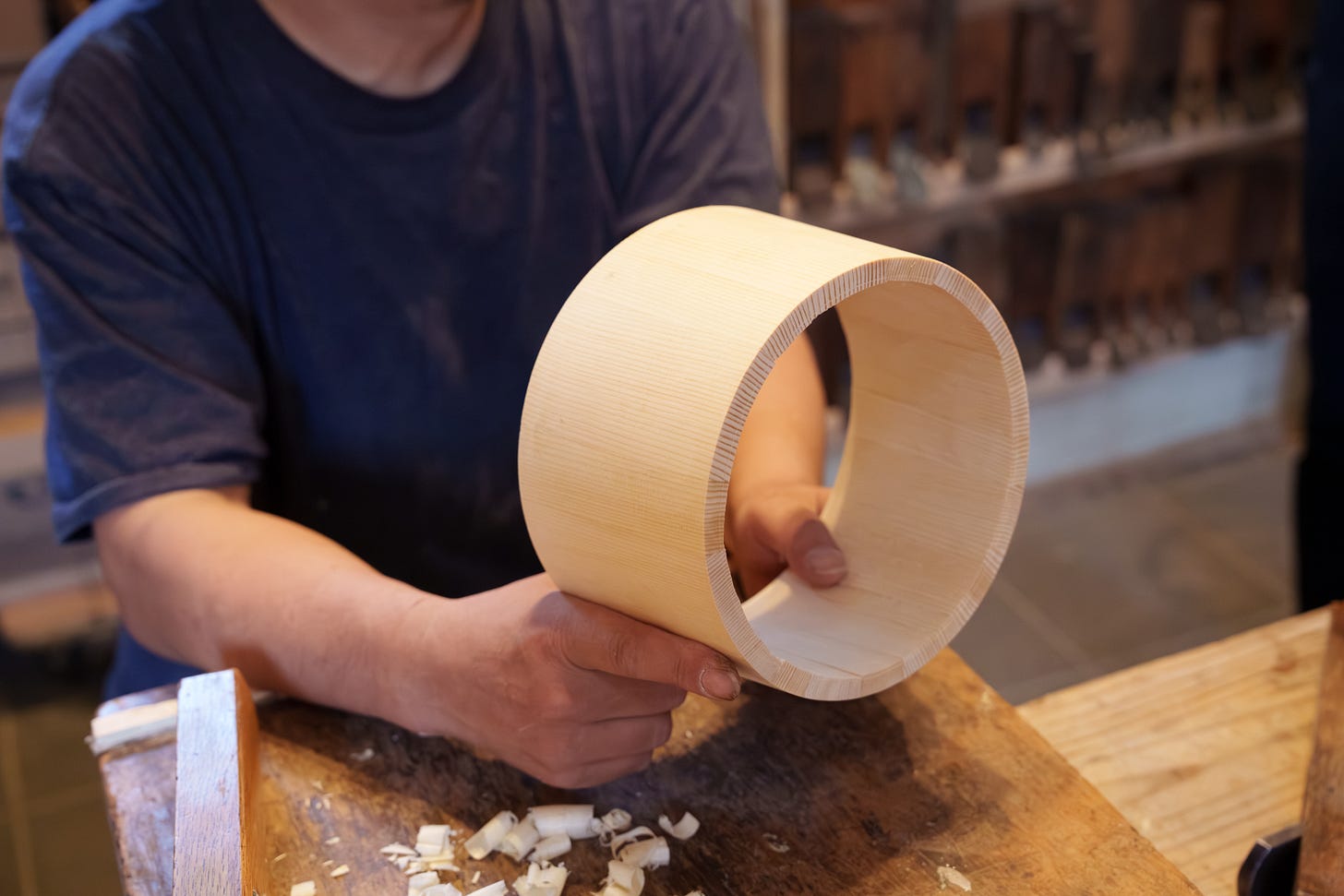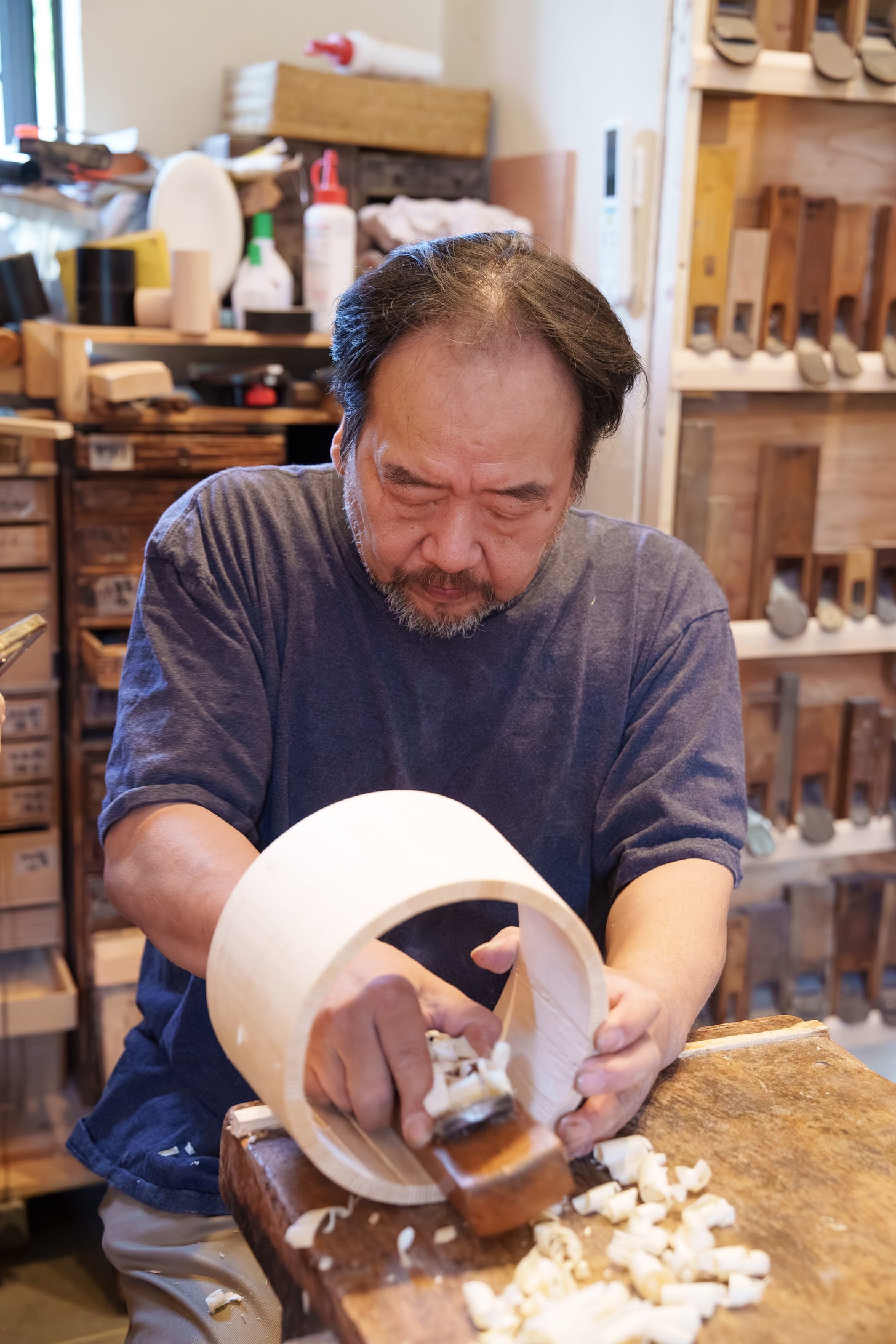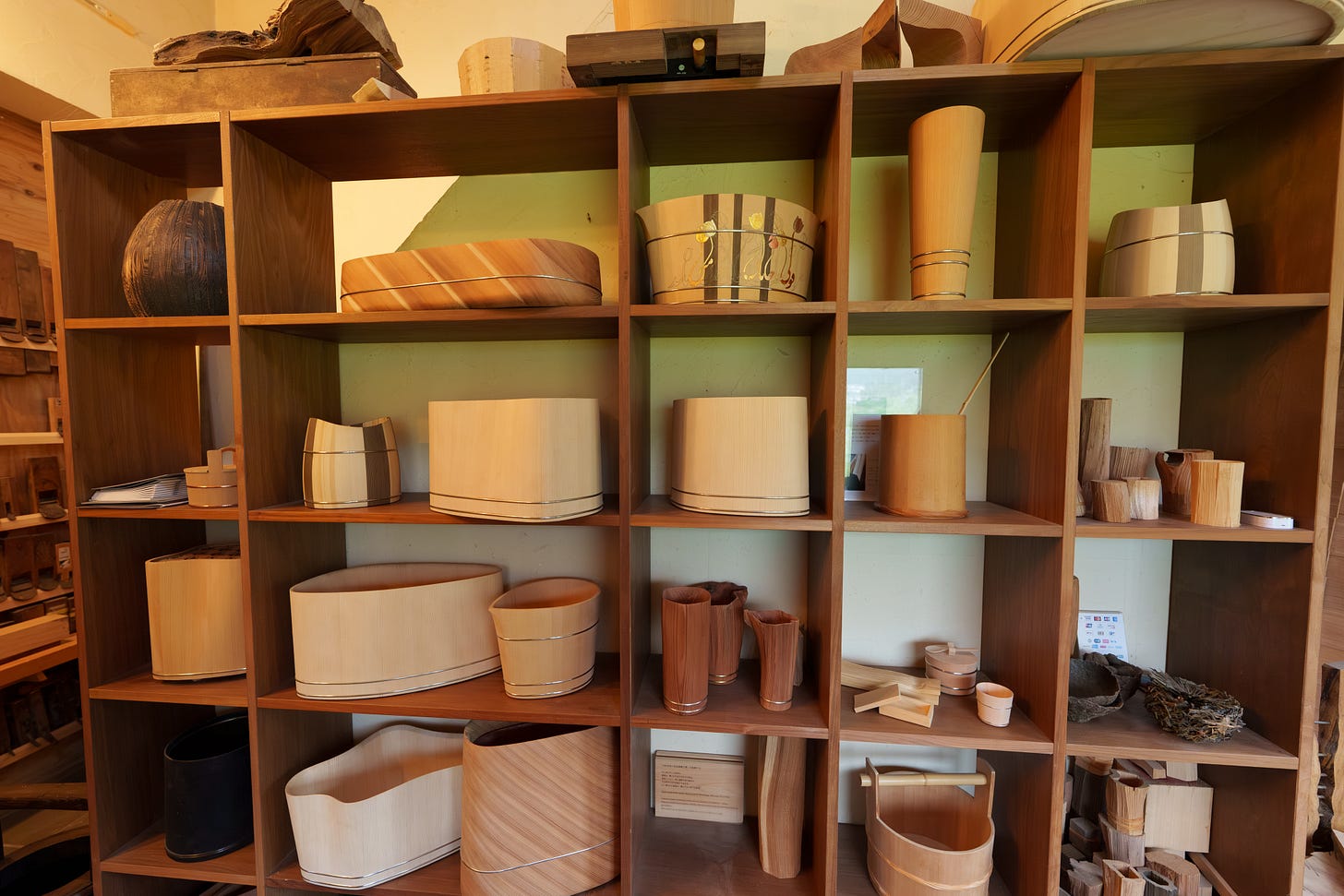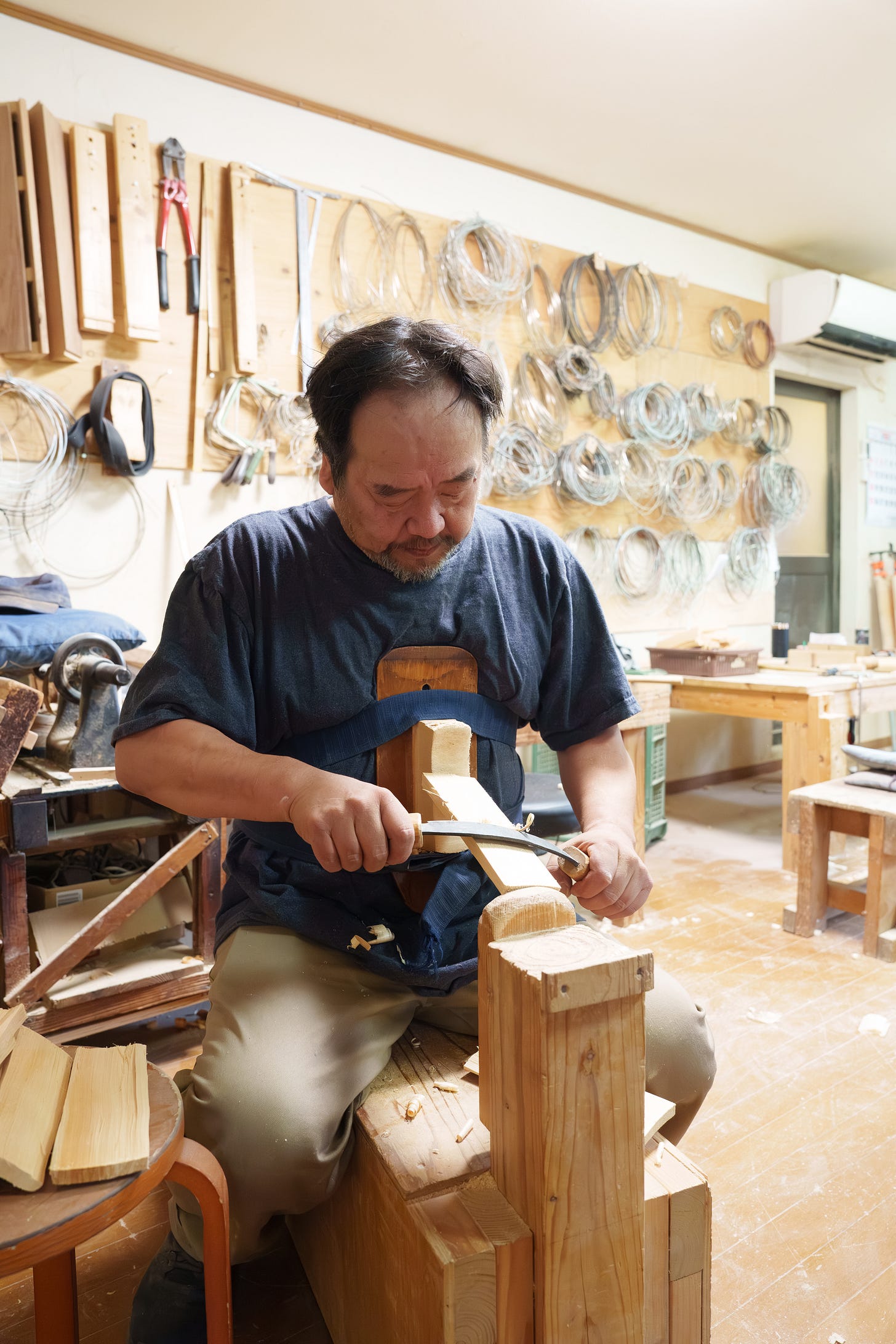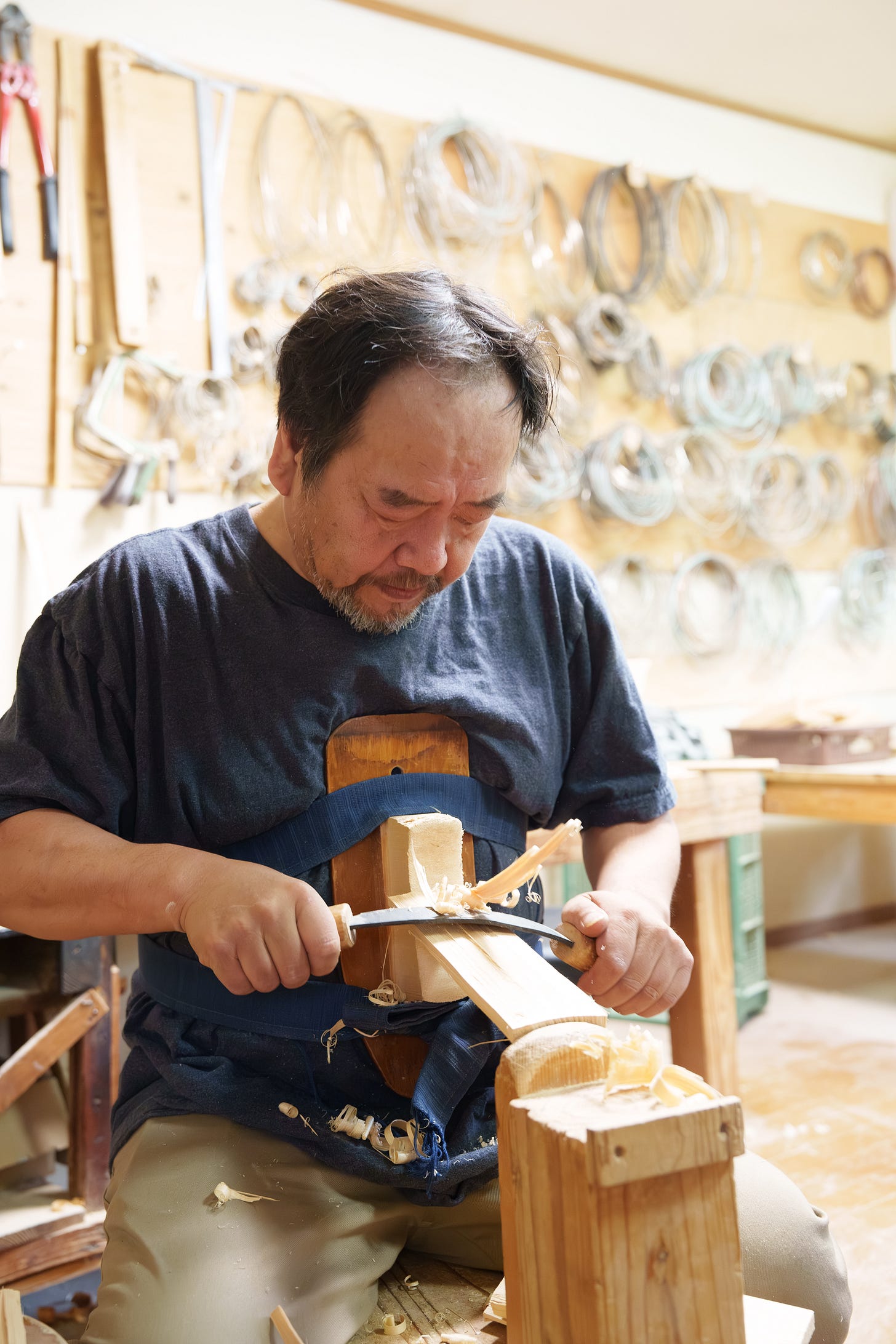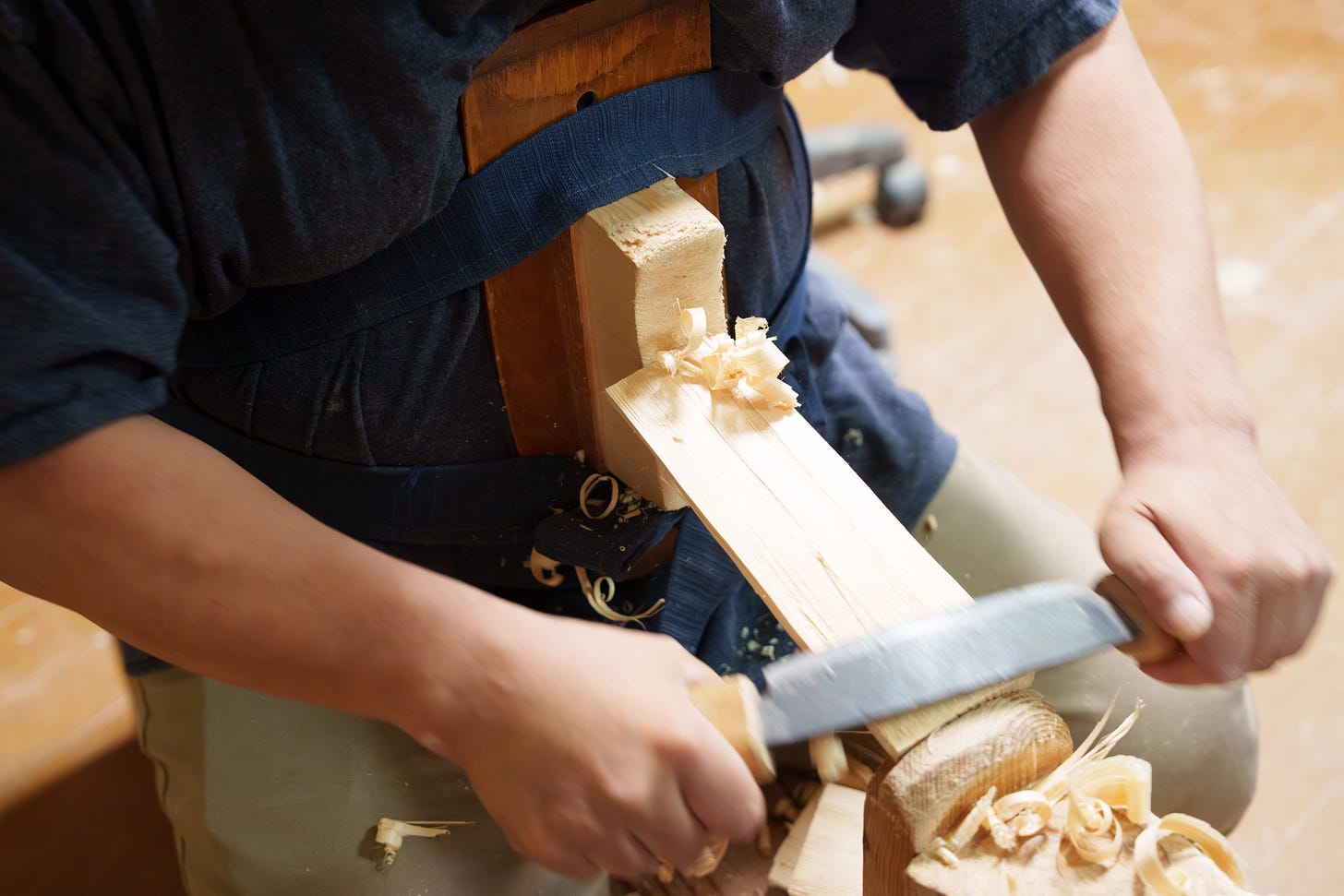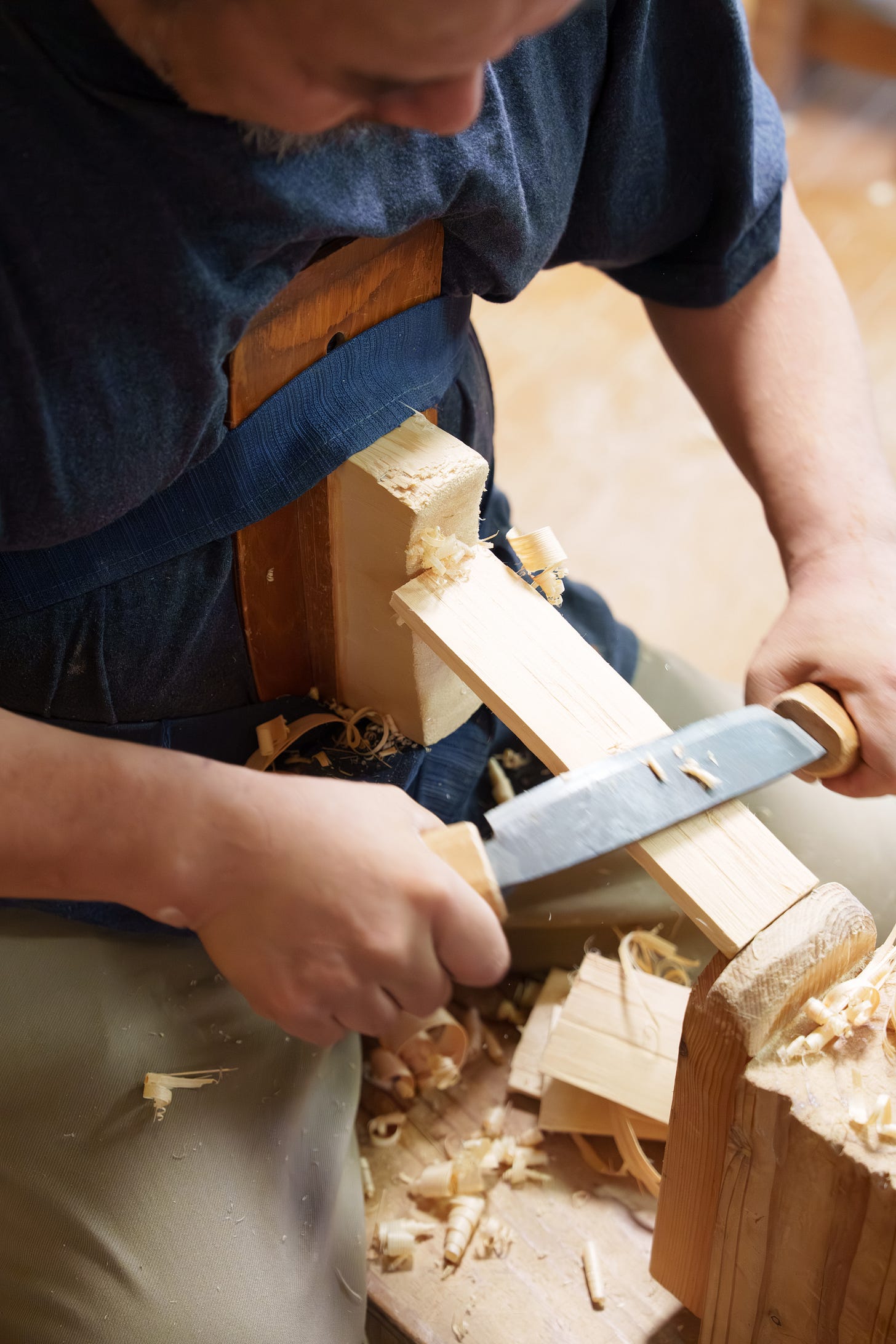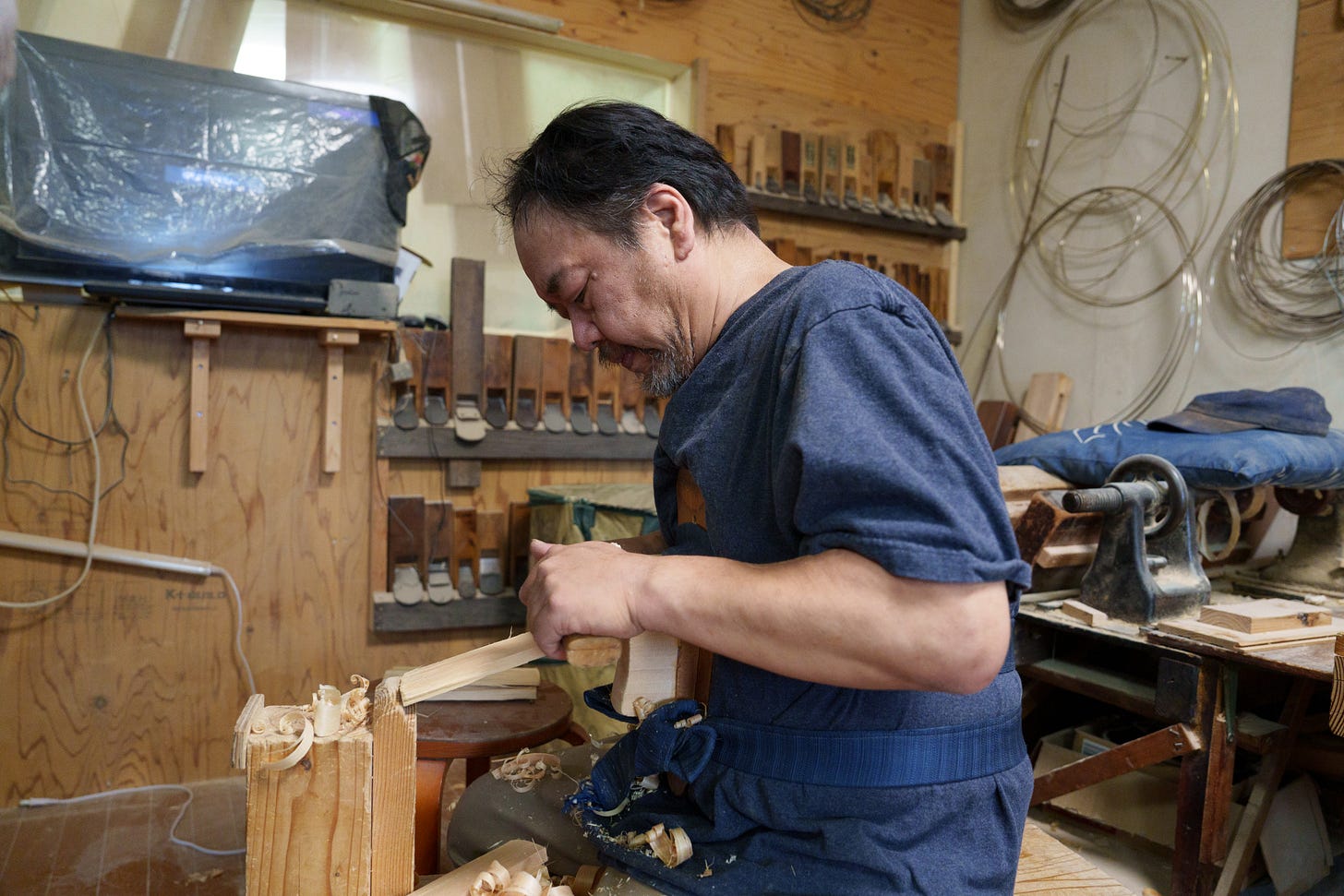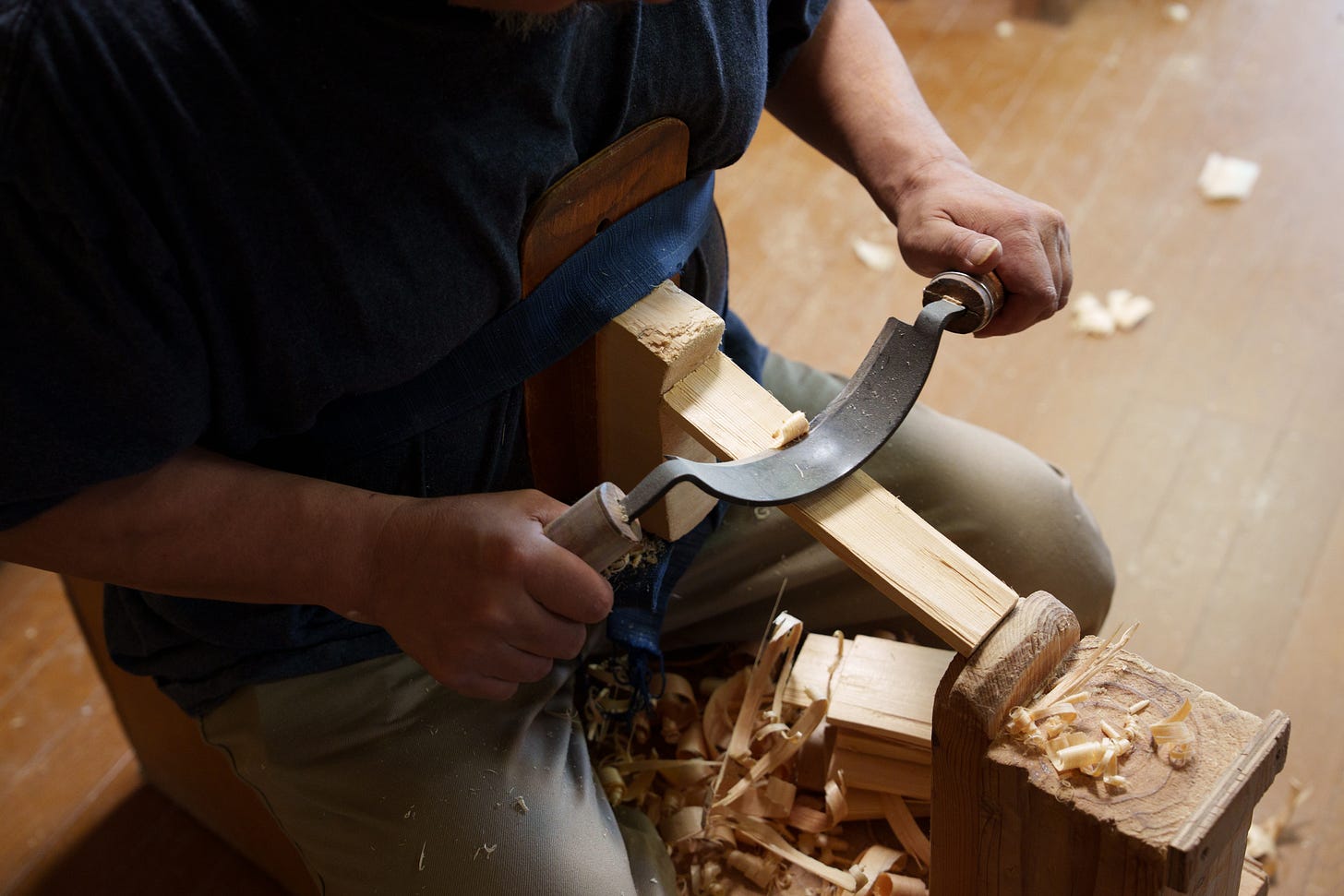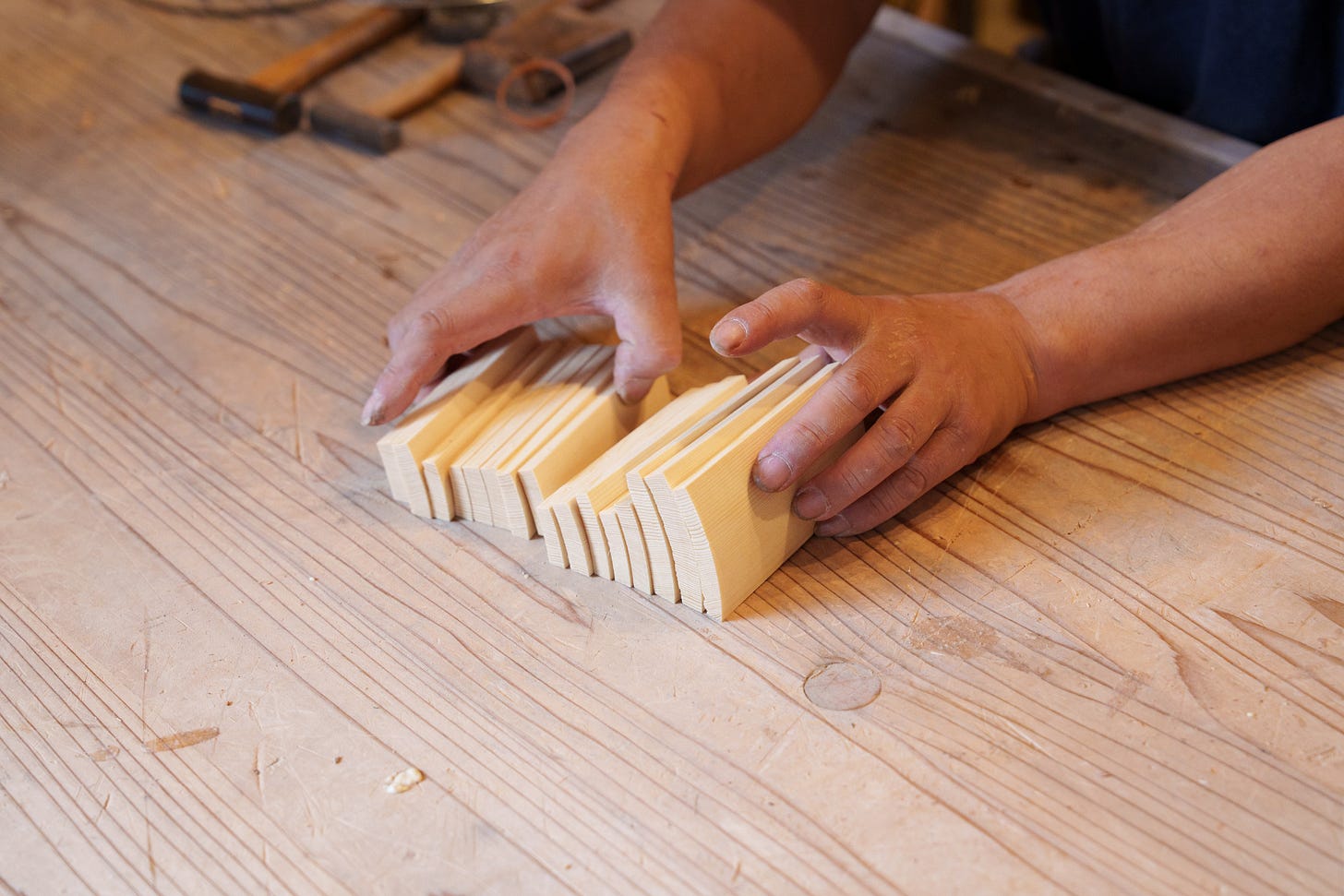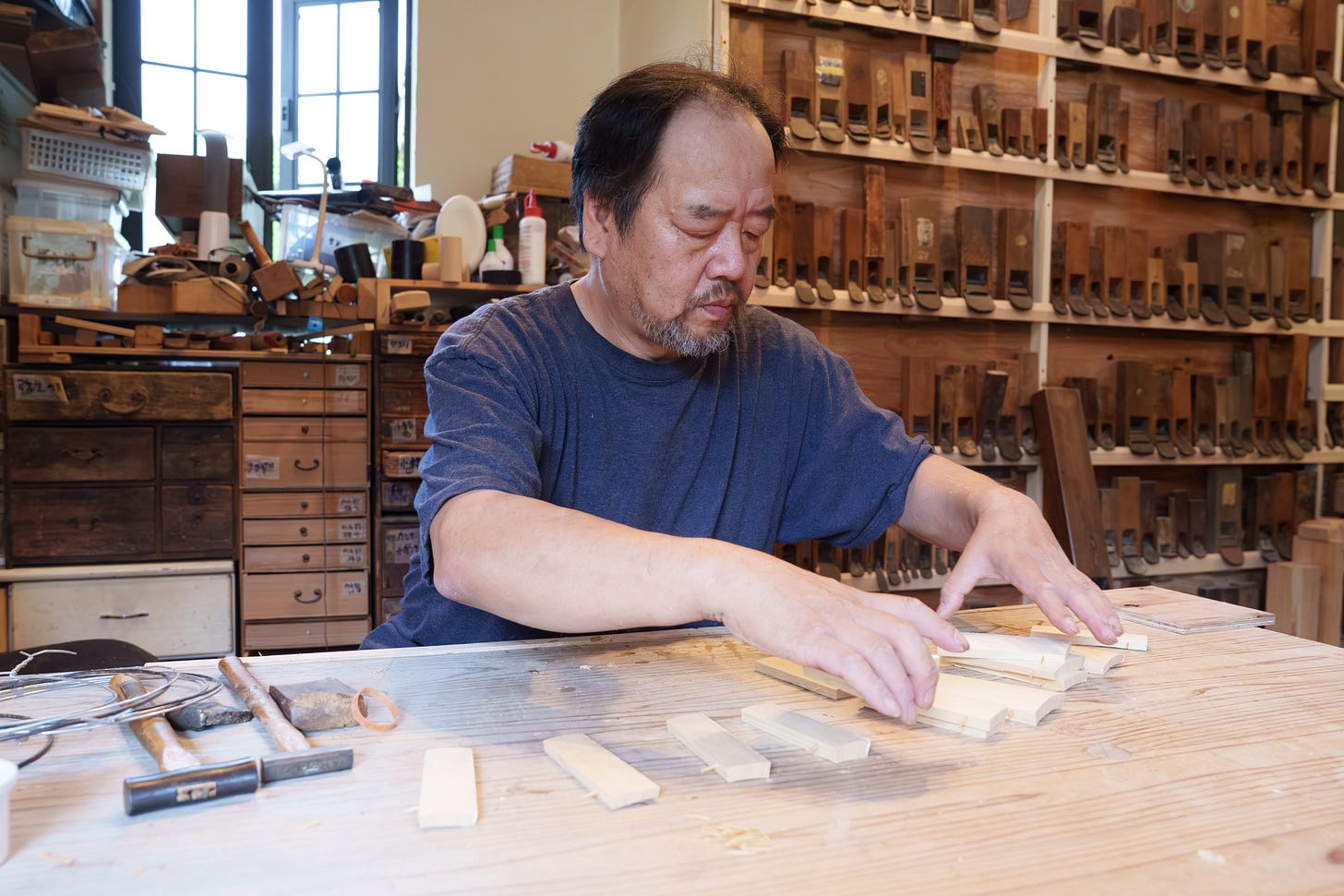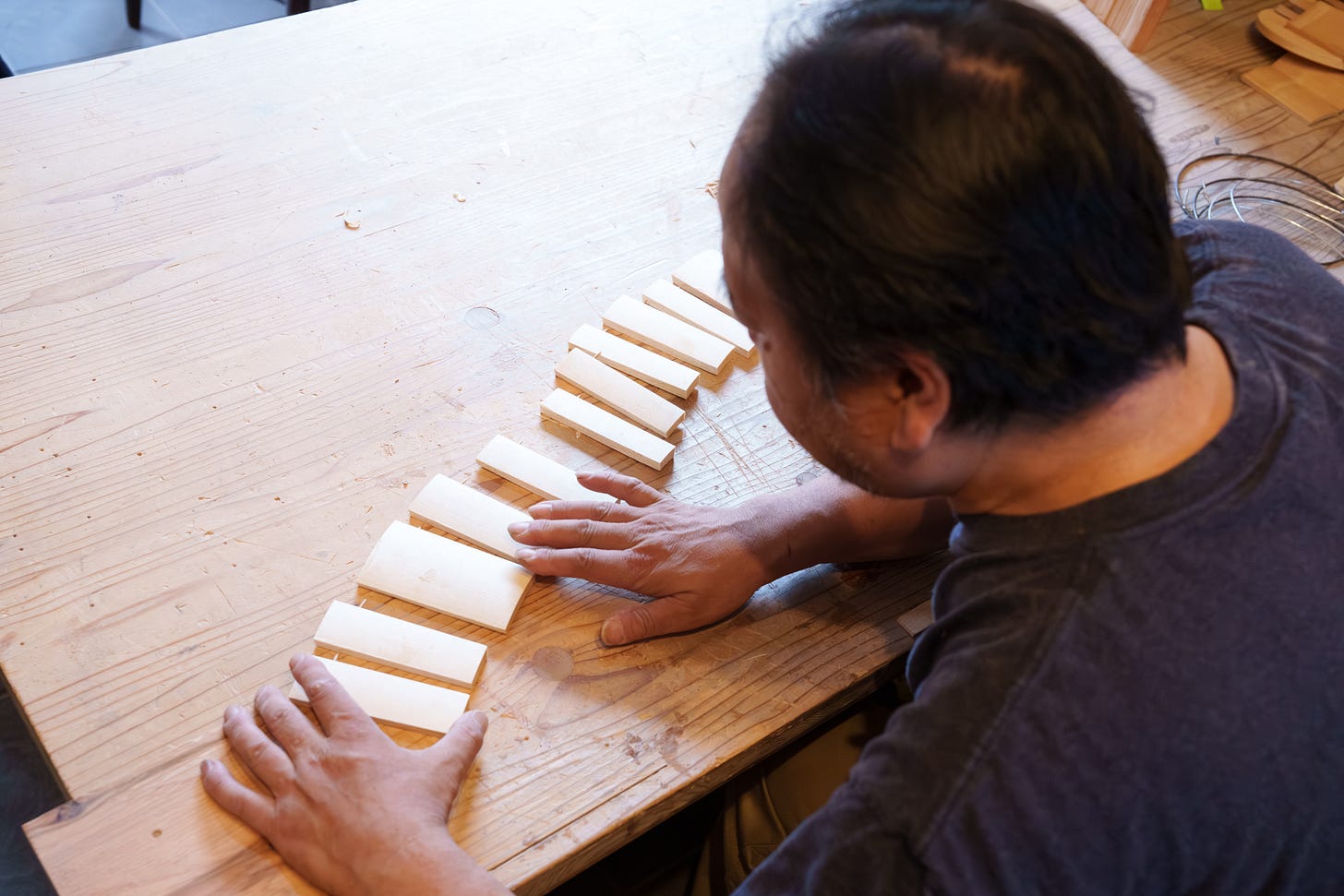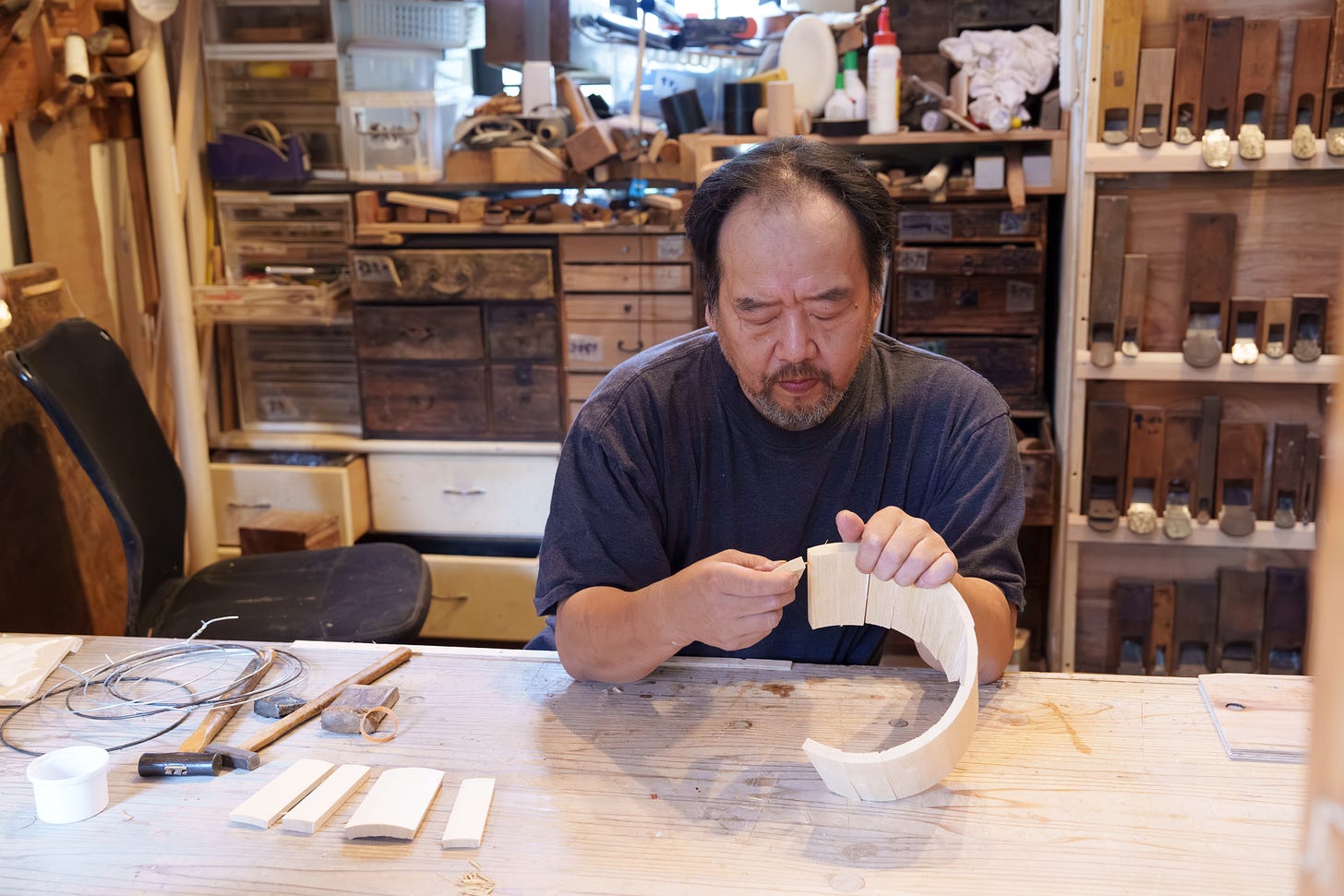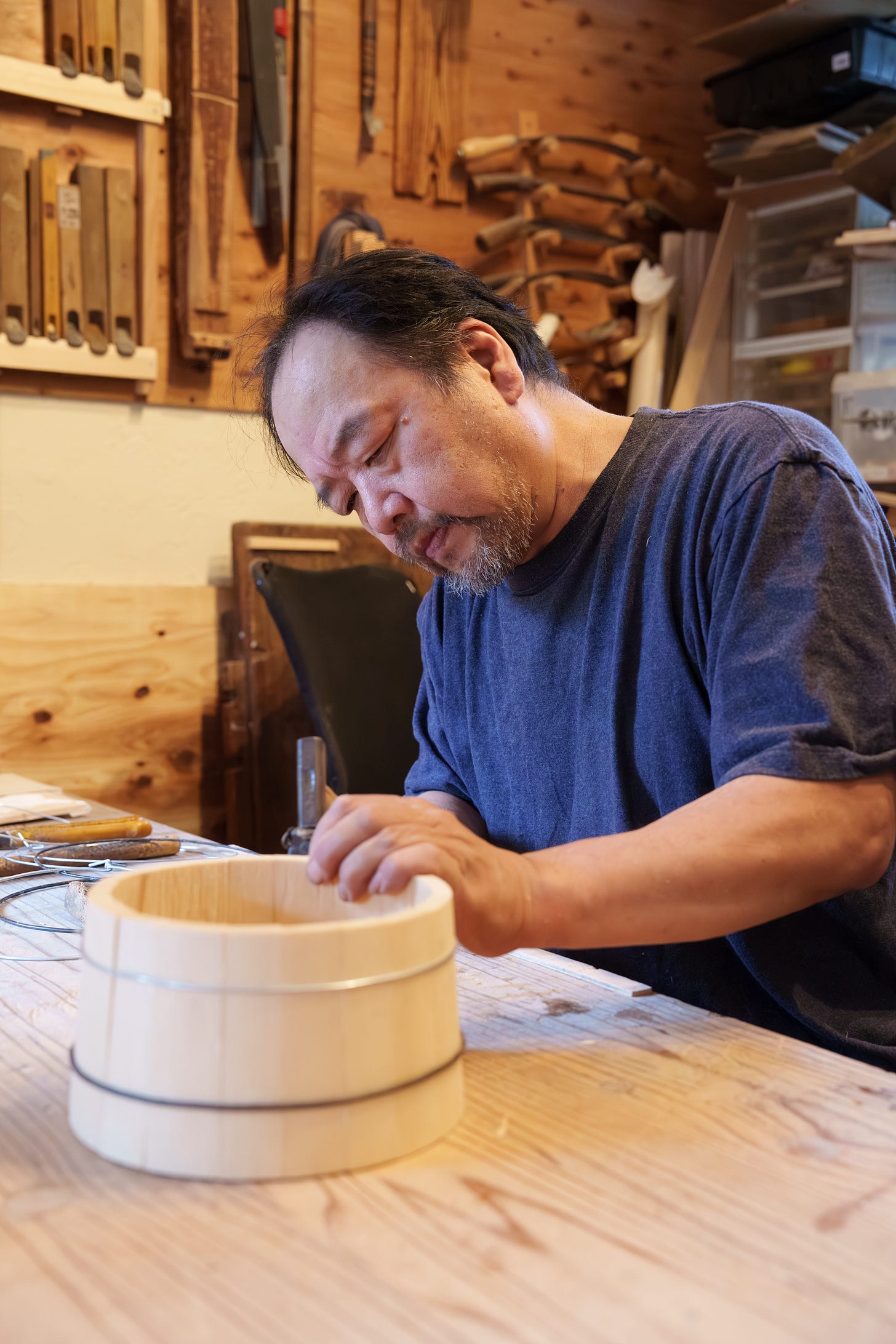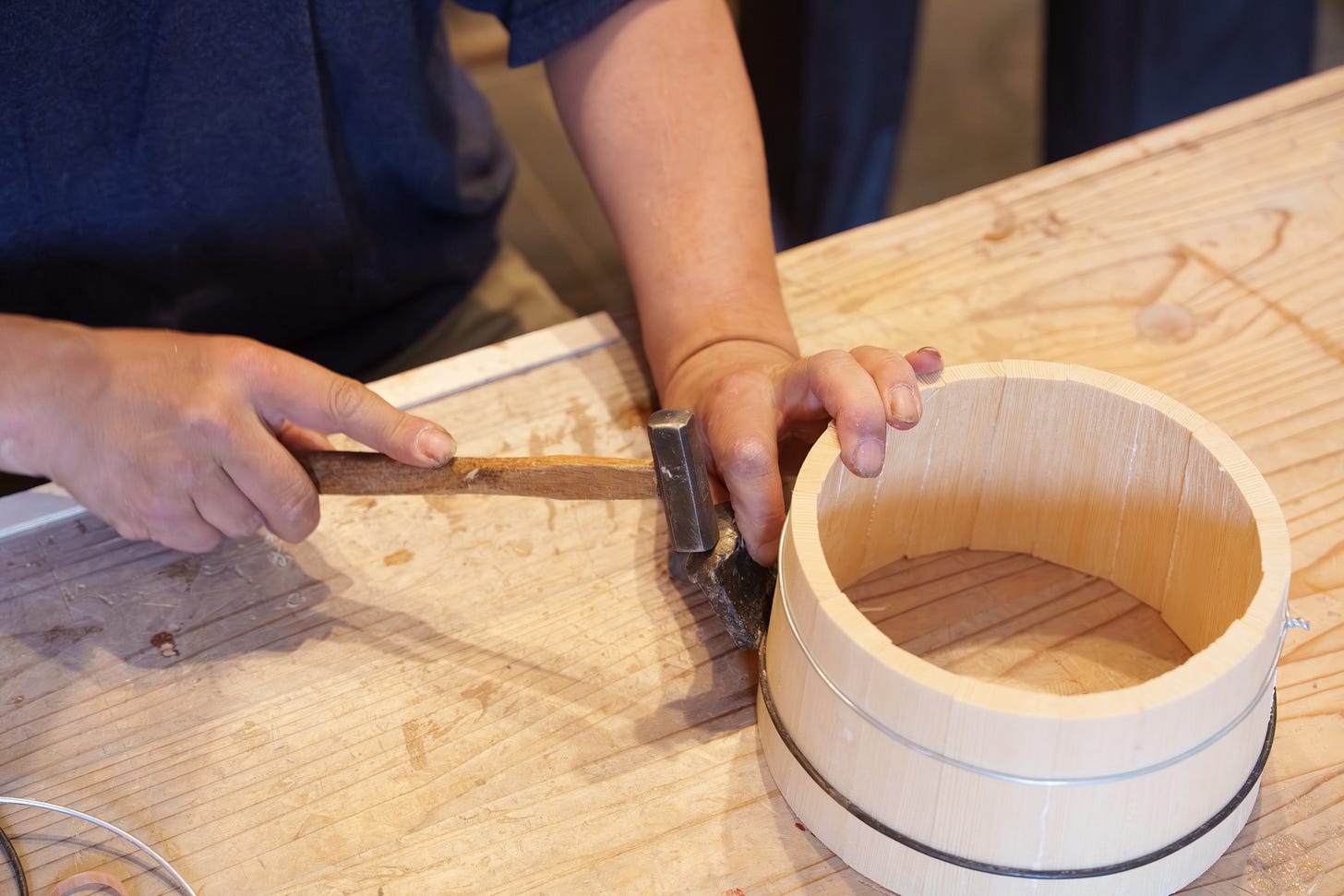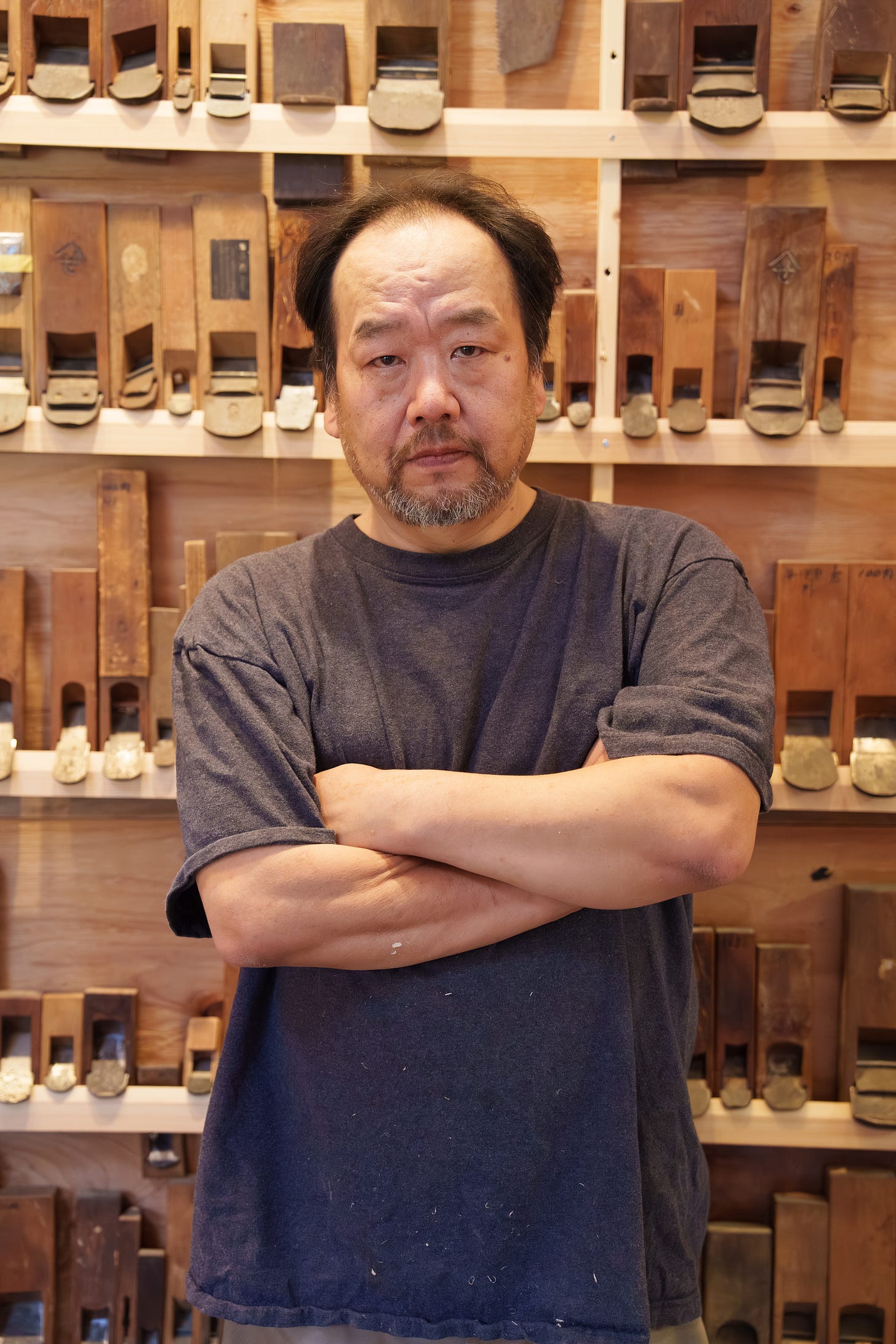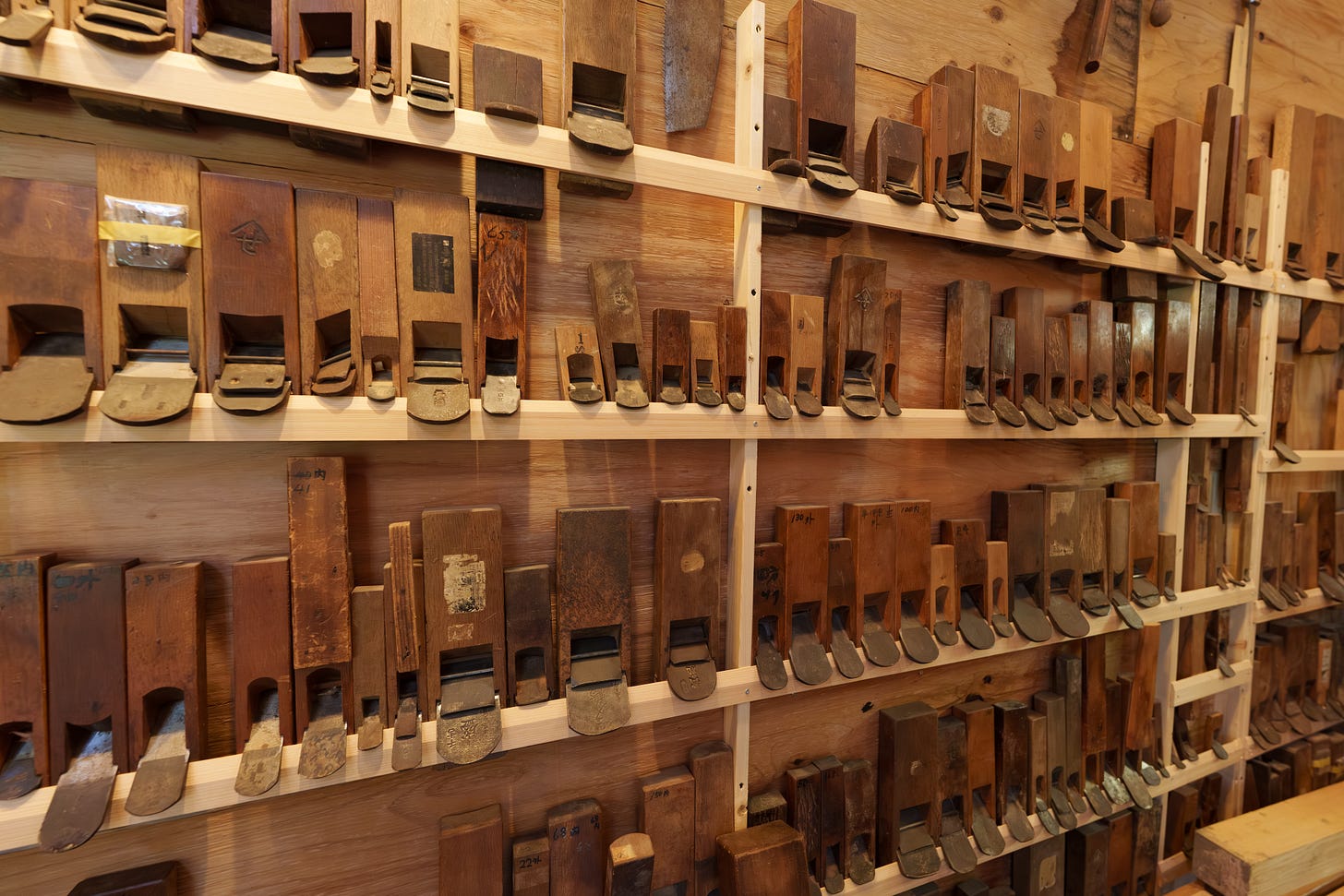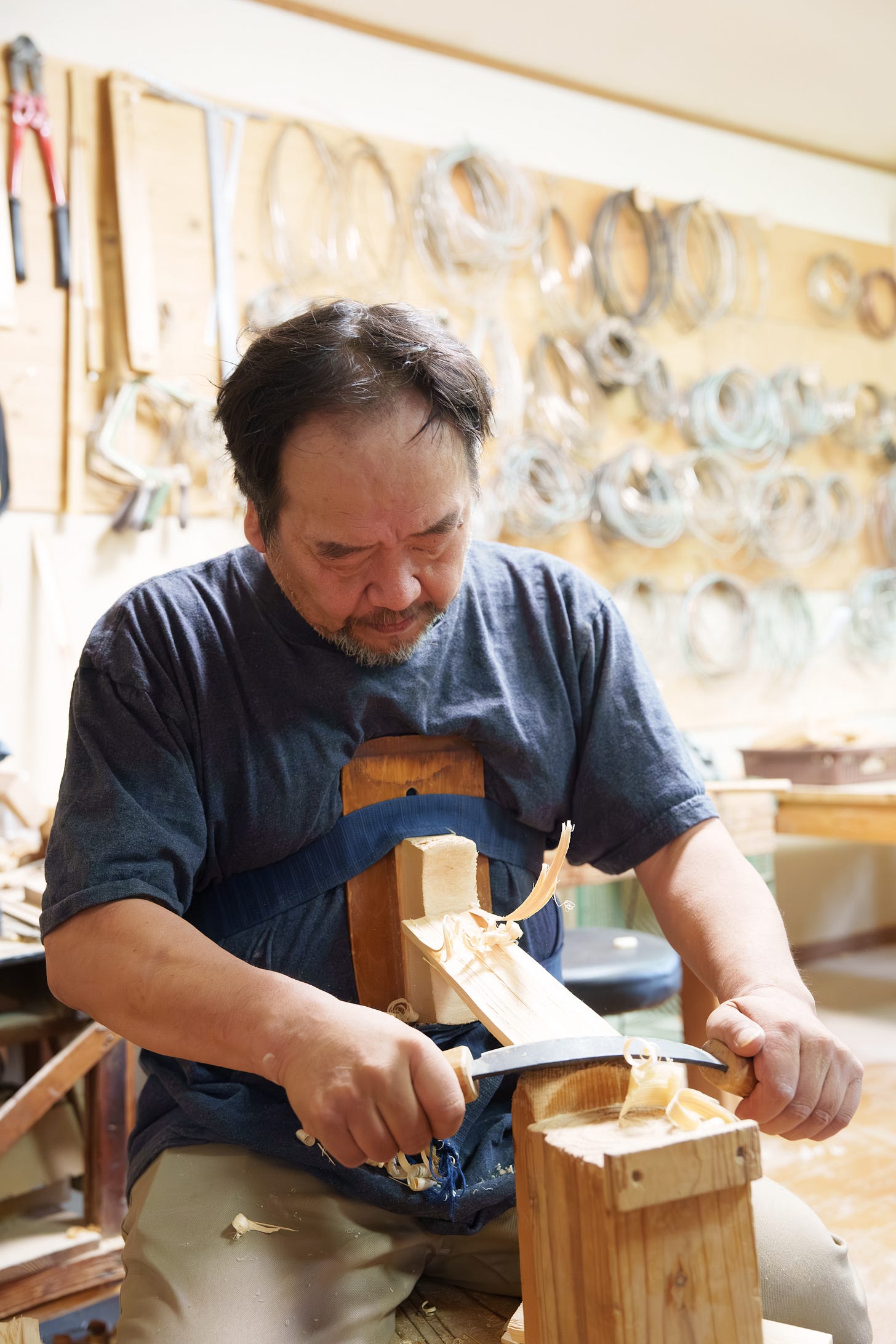Japan's New Craftspeople: Shuji Nakagawa
From Oke to Architecture
Shuji Nakagawa (b. 1968)
By breathing new life into traditional crafts and pivoting centuries-old woodworking traditions toward new artistic expressions, and pushing boundaries with great flexibility and a daring attitude, Shuji Nakagawa exemplifies the new Japanese master craftsman, merging crafts with contemporary art. Skill and sensibility are required to master his craft of oke, traditional wooden buckets, traditionally used for food preparation, storage of sushi rice, and in bathing and washing. Those buckets are composed of staves of wood, usually cypress or cedar, and are held together by small, invisible bamboo pegs and metal hoops. A third-generation woodworker of a Kyoto family specializing in oke, Shuji creates the type of objects never previously crafted by oke makers. Passed down to him from his father, these skills were previously devised exclusively for crafting Oke.
Born and raised in Kyoto, Shuji’s grandfather began making Oke when it was essential for daily life, found in every household in Japan. He learned the craft as a young apprentice, but with the growth of industrialization following the Second World War, and Oke being mass-produced in plastic and other industrial materials, the wooden, handmade objects had lost their traditional place in the Japanese household, and the heritage had nearly disappeared. His son, Shuji’s father, Seiji Nakagawa, a second-generation master craftsman, kept the craft alive, thanks to the loyal clientele of the upscale ryokans and hotels in Kyoto. He offered private hot spring baths equipped with Oke to his guests, allowing them to experience authenticity when visiting the ancient town. He was designated a Living National Treasure for preserving the vanishing craft.
Shuji graduated from Kyoto Seika University with a degree in sculpting art, while simultaneously learning woodworking under his father. Contemporary art has always been his passion, and he began by exhibiting his paintings as a young artist. Today, he combines his skills as a woodworker with the creative vision of an artist, merging the techniques he inherited from his ancestors with art and architecture, while constantly revisiting traditions that are his source of innovation. From the beginning, he sought artistic independence, leaving his family's workshop in Kyoto to establish his own home and studio in Otsu, Shiga Prefecture, on the shores of Lake Biwa. Surrounded by open, unadulterated nature, he alters shapes, forms, and scales. He has devised new functions for centuries-old Japanese accessories, such as champagne coolers, side tables, and stools, as seen in the ‘Wooden Oke Tea Room,’ which was exhibited as Ateliers Courbet in New York last year, as he adapted his craft to architectural design. It was where I first met him, but seeing him again at his studio sanctuary was an excellent opportunity to experience the environment of his studio and witness a demonstration. His two-story workshop is filled with an enormous collection of old tools, all hung meticulously on the walls, at which I marveled, watching him at work.
Shuji shaves the wooden slats using an old plane, then places them in a round configuration. The slats form the sides and bottoms of the buckets, and must fit together perfectly. He then connects them with bamboo nails and rice glue. As he was making an oke, he spoke about his memories of crafting pegs as a teenager at his father’s workshop. Every type of wood has its unique personality, look, consistency, and scent. The Jinai-Sugi, a variation of Japanese cedar that originates from northern Japan, symbolizes the interconnectedness of humanity and the natural world. Sawara cypress is renowned for its soft fragrance and exceptional water-absorbing properties, making it ideal for a rice container. In contrast, the Hinoki cypress is not suitable for food and drink due to its powerful scent, and instead is used for its health applications, making it a suitable species for wooden bathtubs and other bathroom elements.
Photography by © Takuro Kawamoto.
This visit was made possible by Les Ateliers Courbert.



